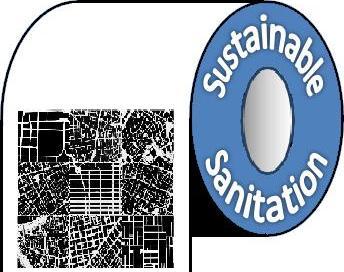Urban Environmental Management

|

Urban Sanitation and

Sustainability

Integrated urban sanitation systems for better health, better environments, and better qualities of life.
|
|
|
Urban Sanitation and Sustainability
| Sanitation generally refers to the provision of facilities and services for the safe disposal of human urine and feces, and its proper disposal in an economically viable, socially acceptable and technically and institutionally appropriate, besides protecting environment and the natural resources.
Resources
|
|
| |
W ith more than half of humans choosing to live in cities, the proper management of human excreta (including its safe and clean confinement, treatment, disposal and associated hygiene-related practices) becomes critical in improving the quality of life in cities. Of particular importance is to understand sustainable sanitation within the larger perspective of urban environmental management, including integrated waste management, safe/clean water management, air quality management, etc.
GDRC's work on Sustainable Sanitation was developed to raise awareness on issues related to sustainable sanitation, to assist in policy and programme development; and to facilitate monitoring and evaluation. It aims to promote a greater focus on sustainable sanitation within a framework of integrated urban environmental management.
|
|
Do you have any suggestions or additions to make on the above information? Please send an email to the address listed beow.
|
|
|
A round the world, 884 million people do not have access to safe drinking water and 2.5 billion are without adequate sanitation facilities. |
|
G oal 6 of the Sustainable Development Goals (SDGs) calls for
"ensuring availability and sustainable management of water and sanitation for all" |
|
M ore than two billion people around the world do not have adequate sanitation and/or no means of wastewater disposal. 90% of wastewater worldwide is either only poorly treated, or not treated at all before discharge. |
|
S anitation rarely receives the required attention and priority, despite its key importance to many other sectors. Progress towards the Millenium Development Goal (MDG) in sanitation has been much too slow, particularly in Sub-Saharan Africa and Asia |
|
W HO attributes 80% of all diseases and 25% of all deaths in developing countries to polluted water. |
|
T he International Year of Sanitation was celebrated in 2008, highlighting the criticality of sustainable sanitation. See archives at - esa.un.org/iys |
|


